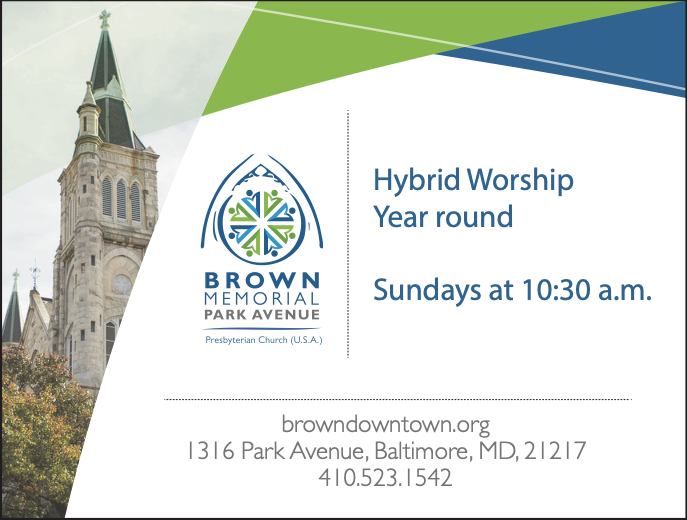
Bolton Hill Parks and Gardens
Bolton Hill includes a variety of parks and gardens, large and small, old and new. Bolton Hill residents have assembled descriptions and summaries of their histories. If you have any additional information about the neighborhood’s parks and gardens or want to learn how to volunteer, please contact parks@boltonhillmd.org. You can also make a donation to BHCA’s general greening fund to support green spaces in the neighborhood or, in some cases, designate your gift to a particular park or garden. You can also become more involved with greening and beautification in the neighborhood by becoming a member of the Bolton Hill Garden Club.
Parks Gardens
Congressional Medal of Honor Park Ana’s Garden
Contee-Parago Triangle Park Corpus Christi Rectory Garden and Grounds
Eutaw Place Medians Mount Royal School Pollinator Garden
F. Scott Fitzgerald Park Sally’s Garden
John Street Park Zippy’s Garden
Mount Royal Median
Parks
Congressional Medal of Honor Park
On August 17, 1939 a monument placed at the corner of Preston and Howard Street, adjacent to the Fifth Regiment Armory, was dedicated to two Baltimore heroes who had been honored after World War I with the Congressional Medal of Honor. The Memorial Craftsmen of American commissioned the monument and organized the event attended by 1,000 people, including Governor Herbert O’Conor and state officers of the American Legion.
 Private Henry G. Costin was born June 15, 1898 in Baltimore and graduated from the Baltimore City College in 1914. After enlisting in the Army in 1917, he fought in France. On October 18, 1918 near Bois-de-Consenvoye, Henry was killed while performing an act of extreme heroism, for which he was awarded the Congressional Medal of Honor.
Private Henry G. Costin was born June 15, 1898 in Baltimore and graduated from the Baltimore City College in 1914. After enlisting in the Army in 1917, he fought in France. On October 18, 1918 near Bois-de-Consenvoye, Henry was killed while performing an act of extreme heroism, for which he was awarded the Congressional Medal of Honor.
Ensign Charles Hammann was born March 16, 1892 in Baltimore and attended Baltimore Polytechnic Institute. He joined the Naval Reserve in October 1917. He was awarded the Congressional Medal of Honor when, as a pilot off the Austro-Hungarian coast, he dove down next to a downed pilot and brought him to safety even though his plane was not designed for a double load.
At some point after Urban Renewal, the monument was moved to the corner of Park Avenue, Howard Street, and Dolphin Street.
Contee-Parago Triangle Park
The area bounded by Dolphin Lane, Bolton Street, and Dolphin Street that wo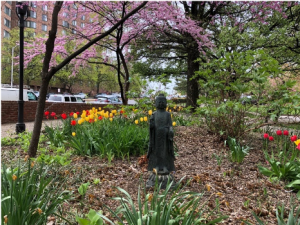 uld become Contee-Parago Triangle Park had been cleared for urban renewal in the 1960s, but neighbors did not want a proposed development for the site. In May of 1969, the 1200 Block Bolton Street Improvement Association met with the City’s Housing and Community Development Department to discuss implementation of plans dating back to 1956 for the park. On May 15, 1971, the Association dedicated the area to Mr. William Gailes Contee and Mr. Edward William Parago, two of Bolton Hills oldest residents.
uld become Contee-Parago Triangle Park had been cleared for urban renewal in the 1960s, but neighbors did not want a proposed development for the site. In May of 1969, the 1200 Block Bolton Street Improvement Association met with the City’s Housing and Community Development Department to discuss implementation of plans dating back to 1956 for the park. On May 15, 1971, the Association dedicated the area to Mr. William Gailes Contee and Mr. Edward William Parago, two of Bolton Hills oldest residents.
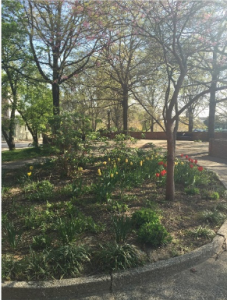 Mr. Contee was born in 1888, 23 years after the Civil War and bought his house at 232 Dolphin Lane in 1930. Mr. Parago bought his house at 234 Dolphin Lane in 1908. His grandson, Reece Culbreath, still lives in his grandfather’s house.
Mr. Contee was born in 1888, 23 years after the Civil War and bought his house at 232 Dolphin Lane in 1930. Mr. Parago bought his house at 234 Dolphin Lane in 1908. His grandson, Reece Culbreath, still lives in his grandfather’s house.
The area was dedicated as “Contee-Parago Triangle” because, at the time, a park could not be named for a living person. At the October 30, 1974 Board of Recreation and Parks meeting, the minutes noted that the board voted to break precedent and name a park for a living person, “The Board of Re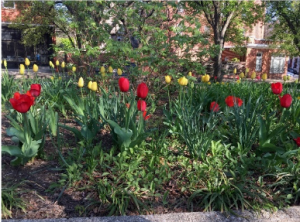 creation and Parks noted that this represents a change in its prior policy whereby facilities in the park system were named only for deceased individuals, and decided that henceforth each case presented to the Board, shall be acted upon on its own merits. Mr. Sam Hopkins also requested that the triangle located at Bolton and Dolphin Street, formerly known as the ‘Contee-Parago Triangle’ can now be known as ‘Contee-Parago Park’, and Messrs. Contee and Parago are to be notified.”
creation and Parks noted that this represents a change in its prior policy whereby facilities in the park system were named only for deceased individuals, and decided that henceforth each case presented to the Board, shall be acted upon on its own merits. Mr. Sam Hopkins also requested that the triangle located at Bolton and Dolphin Street, formerly known as the ‘Contee-Parago Triangle’ can now be known as ‘Contee-Parago Park’, and Messrs. Contee and Parago are to be notified.”
Today, the park includes a unique stand of willow oaks, and neighbors around the park have added a small Buddha statue to provide solace and serenity.
Eutaw Place Medians
The western boundary of Bolton Hill is Eutaw Place. It was established in 1854, when city developer Henry Tiffany acquired 21 acres and petitioned the city to erect the boulevard. He began to market lots along the boulevard for row home construction with 165-foot-wide streets and
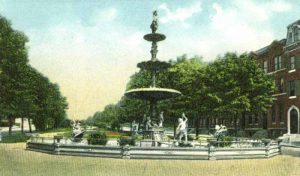
72-foot promenade gardens in the middle. Tiffany donated the land for the median promenade gardens and fountains. The boulevard was intended to be an imitation of the Champs-Elysees of Paris and became a prototype for American landscaped parkways. As monuments were erected in the boulevard, it became the match of other well-known urban boulevards such as Commonwealth Avenue of Boston.
 Some elements of the boulevard have changed over the years. Ornate iron railings built by Lo Wilson in 1876 had surrounded five block-long parks. Park statues at Mosher Street and Eutaw Place depicted the seasons, with figures of elderly men facing four directions. Centennial (or “Children’s”) Fountain was built between McMechen Street and Eutaw Place but was removed some time later, with speculation that it was melted down for scrap metal for World War II. The Francis Scott Key Monument, designed by French sculpture Jean Marcus Antonin Mercie, was erected in 1911 and still sits at Lanvale Street and Eutaw Place.
Some elements of the boulevard have changed over the years. Ornate iron railings built by Lo Wilson in 1876 had surrounded five block-long parks. Park statues at Mosher Street and Eutaw Place depicted the seasons, with figures of elderly men facing four directions. Centennial (or “Children’s”) Fountain was built between McMechen Street and Eutaw Place but was removed some time later, with speculation that it was melted down for scrap metal for World War II. The Francis Scott Key Monument, designed by French sculpture Jean Marcus Antonin Mercie, was erected in 1911 and still sits at Lanvale Street and Eutaw Place.
During the twentieth century, as individual families could no longer 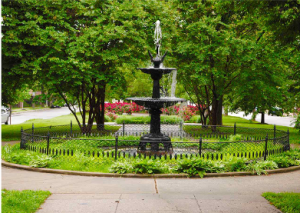 afford to maintain enormous Eutaw Place mansions, many of which were converted into apartment houses, and new residents could not afford to maintain the median gardens of Eutaw Place. Baltimore City assumed maintenance responsibility for the medians, a
afford to maintain enormous Eutaw Place mansions, many of which were converted into apartment houses, and new residents could not afford to maintain the median gardens of Eutaw Place. Baltimore City assumed maintenance responsibility for the medians, a nd the gardens were removed, grass was planted, and as trees deteriorated, they were not replaced according to the original design pattern.
nd the gardens were removed, grass was planted, and as trees deteriorated, they were not replaced according to the original design pattern.
Today, the Eutaw Place medians are a work in progress. As newerresidents move to the neighborhood, they are assuming more and more responsibility for the median gardens. In 1999, the Bolton Hill Garden Club was the primary organizer for the restoration of the Francis Scott Key Monument. Members of the Garden Club renovated and help maintain the Gunther Fountain in the 1400 block of Eutaw Place. In 2006, the Garden Club funded the renovation of the median garden in the 1800 block of Eutaw Place and continues to fund its maintenance.
F. Scott Fitzgerald Park
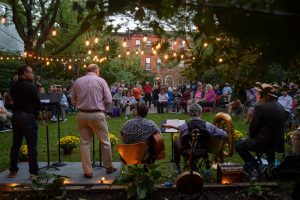 Bolton Hill resident Frank Shivers captured the history of F. Scott Fitzgerald Park best in his tome, Bolton Hill: Classic Baltimore Neighborhood:
Bolton Hill resident Frank Shivers captured the history of F. Scott Fitzgerald Park best in his tome, Bolton Hill: Classic Baltimore Neighborhood:
Har Sinai synagogue occupied this site for a century before a fire left only stone walls standing. The city fathers tore down walls and created a passive park but gave it no name. Here was the chance to honor F. Scott Fitzgerald, the author of The Great Gatsby, a favorite book that I had once secretly ordered for my English class at the University of Cincinnati when that novel wasn’t yet in the curriculum. Fitzgerald had resided at 1307 Park Avenue and rented office space near the new park.
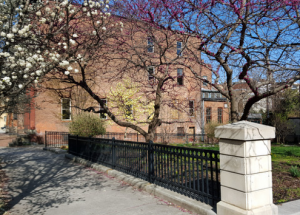 In 1975 the city’s park board ruled on my proposal to name a new park on Bolton Street (at Wilson) to honor F. Scott Fitzgerald. The reply to my proposal through the municipal grape vine claimed that my author was “too controversial.” “What!” I thought, “Were Baltimoreans still stuck on his reputation for drinking and womanizing? Or maybe they didn’t like his novel about incest and infidelity?” (Tender is the Night, 1934). When I then turned to Lou Azrael, a journalist who had known and liked Scott, he wrote the park board: “Fitzgerald was a great distinction to the town and the neighborhood. He was of course one of the outstanding literary figures of the past 50 years. He had roots in Baltimore, and he loved it, and Baltimore, of course, ought to recognize him.” That’s why the name “F. Scott Fitzgerald Park” is carved at the entrance.
In 1975 the city’s park board ruled on my proposal to name a new park on Bolton Street (at Wilson) to honor F. Scott Fitzgerald. The reply to my proposal through the municipal grape vine claimed that my author was “too controversial.” “What!” I thought, “Were Baltimoreans still stuck on his reputation for drinking and womanizing? Or maybe they didn’t like his novel about incest and infidelity?” (Tender is the Night, 1934). When I then turned to Lou Azrael, a journalist who had known and liked Scott, he wrote the park board: “Fitzgerald was a great distinction to the town and the neighborhood. He was of course one of the outstanding literary figures of the past 50 years. He had roots in Baltimore, and he loved it, and Baltimore, of course, ought to recognize him.” That’s why the name “F. Scott Fitzgerald Park” is carved at the entrance.
John Street Park
In 1955, a group of Bolton Hill citizens accomplished the extraordinary. Residents of the 1300 block of John Street, through the formation of the 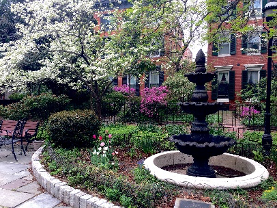 a “Residential Protective Association” three years beforehand in 1952, were able to convince the city to block off their street and create John Street Park. The agreement to convert John Street into a Park was based on an understanding with the City of Baltimore that the 1300 block residents would be responsible for the upkeep and maintenance of the park.
a “Residential Protective Association” three years beforehand in 1952, were able to convince the city to block off their street and create John Street Park. The agreement to convert John Street into a Park was based on an understanding with the City of Baltimore that the 1300 block residents would be responsible for the upkeep and maintenance of the park.
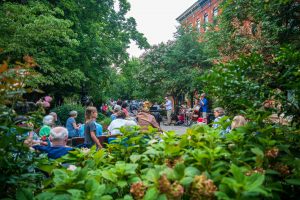
When John Street Park was dedicated on September 10, 1955, an article appeared in newspapers across the country highlighting the actions of ordinary citizens to work with government to create green space in urban communities.
As part of the park’s fiftieth anniversary in September 2005, it was enhanced with a three-tired Victorian fountain surrounded by a garden, low-ground lighting, and four Victorian-style benches.
Lanvale Triangle Park
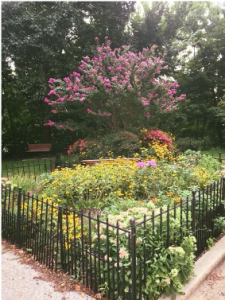 The Lanvale Triangle Park at the intersection of Lanvale and Rutter Streets was once a desolate barren lot. A lavender crepe myrtle planted in the space thrived but looked lonely, so the land was tilled, other crepe myrtles were planted, and around them eventually a perennial garden was created with the help of donations from the Bolton Hill Garden Club. The slope leading down to Howard St. has been planted with roses, oaks, and maples. Neighbors now support and maintain the park, organizing a fundraiser to buy two of the benches in the garden.
The Lanvale Triangle Park at the intersection of Lanvale and Rutter Streets was once a desolate barren lot. A lavender crepe myrtle planted in the space thrived but looked lonely, so the land was tilled, other crepe myrtles were planted, and around them eventually a perennial garden was created with the help of donations from the Bolton Hill Garden Club. The slope leading down to Howard St. has been planted with roses, oaks, and maples. Neighbors now support and maintain the park, organizing a fundraiser to buy two of the benches in the garden.
Lion Park
Lion Park was built in 1974 as a green space during the construction of The Atrium Association (“The Atrium”). The park is owned by the City of Baltimore but leased to The Atrium under 15-year renewable leases. 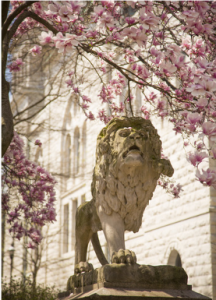 The Department of Recreation and Parks is responsible for the hardscape while The Atrium is responsible for general maintenance, including landscaping, irrigation, and snow removal. The park is open to the public.
The Department of Recreation and Parks is responsible for the hardscape while The Atrium is responsible for general maintenance, including landscaping, irrigation, and snow removal. The park is open to the public.
The distinguishing features of this tranquil park are its numerous trees, shrubs, various ground covers, three lion statues, and two beautiful water fountains. It is most majestic in the springtime with a multitude of flowering azalea bushes, daffodils, daylilies, and tulips. The park is covered with Linden and Maple trees in its line of vision reaching up to the Francis Scott Key Monument.
The park’s namesake lion statues are an important part of Baltimore’s  history. They originally guarded the entrances to the Calvert Street bridge when it was built in 1879. One night in 1893, a tipsy Irishman named Larry Finnegan broke off the tails with a hatchet because he felt that the Lions looked too English and said he detested the British. In 1957 the statues were removed after a year of rebuilding of the Calvert Street bridge to tailor the area to the new Jones Falls Expressway. At the time, the general feeling was that the lions didn’t fit in with the new modern landscape.
history. They originally guarded the entrances to the Calvert Street bridge when it was built in 1879. One night in 1893, a tipsy Irishman named Larry Finnegan broke off the tails with a hatchet because he felt that the Lions looked too English and said he detested the British. In 1957 the statues were removed after a year of rebuilding of the Calvert Street bridge to tailor the area to the new Jones Falls Expressway. At the time, the general feeling was that the lions didn’t fit in with the new modern landscape.
The King of Beasts were shipped to the Baltimore Zoo, where they were to be displayed at the entrance to a newly planned lion enclosure. But having no place to display them, the director of the zoo stored the statues in a barn in Druid Hi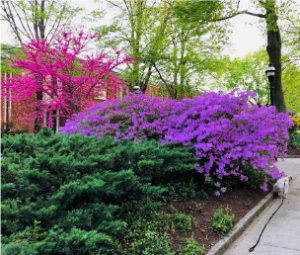 ll Park. Seventeen years later, the lions remained in storage, where vandals had maimed them by breaking off legs and smashing in their faces.
ll Park. Seventeen years later, the lions remained in storage, where vandals had maimed them by breaking off legs and smashing in their faces.
One of the early residents of The Atrium knew about the lions and requested that the City display them in newly developed Lanvale Street Park (now known as Lion Park). If you look closely, you can see the restoration work to repair the vandalism, but no one knows what happened to the fourth lion, as only three were found in the storage barn. Today, the lion statues safely stand on plinths in Lion Park awaiting your visit.
Maple Leaf Park
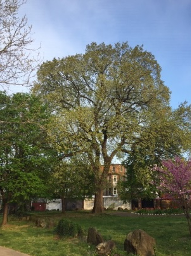
Maple Leaf Park is tucked away at the north end of Bolton Hill with two points of access, the intersection of Bolton and Robert Streets and an alley off the 200 block of Laurens Street. The park boasts an array of trees, including a large majestic American Elm and a unique specimen of Japanese lilac, that attract birds throughout the year. Neighbors whose row homes back up to Maple Leaf Park maintain the park with the help of the Midtown Community Benefits District.
Morrison Park
Douglas R. Morrison Park is located behind the homes on the east side of the 1700 block of Park Avenue. Douglas R. Morrison (1893-1975) lived at  1717 Park Avenue for 70 years. He cared for the park located behind his house for years and planted many of the trees there, including the flowering magnolia, the big oak, the apple tree, and two lilacs. There is a notion, not confirmed, that the little walled area could have been a cemetery for the Bolton Estate. The Park was dedicated to Douglas in 1976.
1717 Park Avenue for 70 years. He cared for the park located behind his house for years and planted many of the trees there, including the flowering magnolia, the big oak, the apple tree, and two lilacs. There is a notion, not confirmed, that the little walled area could have been a cemetery for the Bolton Estate. The Park was dedicated to Douglas in 1976.
Mount Royal Median
Park Avenue Medians
The Park Avenue medians were originally known as Park Place and granted by the City as early as 1860 but really took shape in their current form with fountains and urns in the 1880s. Although the medians remain City property, residents around them tend the fountains and gardens of the park.


Rutter’s Mill Park
In the late 1700s, Bolton Hill was open land, drained by streams that fed into the Jones Falls. One stream, Spicer’s Run, ran from Reservoir Hill, emptying into the Falls just south of where the North Avenue bridge stands today. Just downstream was a water-powered grist mill that, by 1800, was owned by John Rutter, whose family owned property in the neighborhood along the banks of a tributary of Spicer’s Run. That body of water became know as Rutter’s Mill Run. By the late nineteenth century when the row houses on Rutter Street, John Street, Lafayette Street, and Mt. Royal Avenue had been built, those waters had been channeled and covered. Some say that they may still be heard, on quiet nights, running beneath the row homes.

For the first half of the twentieth century, a row of two-story alley-houses similar to those on the 1300 bock of Rutter Street today stood on the site of the park; they were occupied by working class African Americans. Those houses were demolished as part of urban renewal efforts of the mid-1960s. The City gave a committee of neighbors three choices for the land: parking space, MICA student housing, or a park. They voted for a park and chose local architect Constantine “Gus” Courpas to design it. His plan took into account the look of the buildings at the Mosher Street end of the plat, which was the studio of sculptor Reuben Kramer and his wife Penne, who were patrons and caretakers of the park for many years.
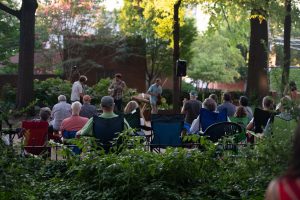 Today, the Rutter’s Mill Park is maintained by its neighbors in the households who back onto it and collectively form the Rutter’s Mill Park Association (RMPA). Although the City has been called on for major repairs, the day-to-day upkeep and beautification is the responsibility of RMPA. Open to the public, this backyard sanctuary for approximately 40 residences and two schools is also a source of quiet pleasure in a bustling urban environment. It’s known to be intimate enough for a single reader, a class discussion, or delicate art installation yet expansive enough to host a church luncheon, a wedding reception, or even an ebullient nursery school graduation.
Today, the Rutter’s Mill Park is maintained by its neighbors in the households who back onto it and collectively form the Rutter’s Mill Park Association (RMPA). Although the City has been called on for major repairs, the day-to-day upkeep and beautification is the responsibility of RMPA. Open to the public, this backyard sanctuary for approximately 40 residences and two schools is also a source of quiet pleasure in a bustling urban environment. It’s known to be intimate enough for a single reader, a class discussion, or delicate art installation yet expansive enough to host a church luncheon, a wedding reception, or even an ebullient nursery school graduation.
Sumpter Park
Sumpter Park is the largest park in Bolton Hill and the venue for neighborhood’s annual Boltonstock summertime concert, Bolton Hill Garden Club events, soccer games, birthday parties, and an assortment of other recreational activities.
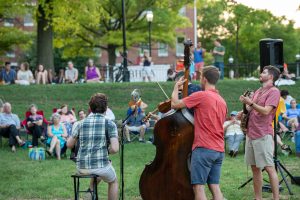
The park is named after Arnold E. Sumpter, a beloved football, basketball, and baseball coach at Murphy Home Recreation Center. Arnold was a married, 23-year-old student at Morgan State University and a Baltimore City Department of Recreation and Parks employee when he was randomly shot and killed in August 1971 while loading equipment in a truck in front of Murphy Homes for delivery to Druid Hill Park, where he was to take a group of children for an athletic contest.
After the rowhouses on the 1800 block of Linden Avenue were torn down during Urban Renewal, the Park 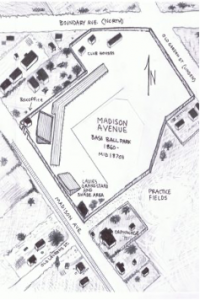 was created in the 1960s, but it wasn’t the first time the area was used for recreation. It was partially the site of the first baseball park in Baltimore as the Madison Avenue Grounds, erected in 1860s by the Baltimore Pastimes Baseball Club. As Baltimore’s first enclosed ballpark, it had stands to seat the fans and player clubhouses. The park was bounded on the west side by Madison Avenue, the east side by Garden Avenue (later called Linden Avenue), and on the north by Boundary Avenue (later called North Avenue). The center field wall ran along what is approximately where the main sidewalk running down the middle of Sumpter Park today.
was created in the 1960s, but it wasn’t the first time the area was used for recreation. It was partially the site of the first baseball park in Baltimore as the Madison Avenue Grounds, erected in 1860s by the Baltimore Pastimes Baseball Club. As Baltimore’s first enclosed ballpark, it had stands to seat the fans and player clubhouses. The park was bounded on the west side by Madison Avenue, the east side by Garden Avenue (later called Linden Avenue), and on the north by Boundary Avenue (later called North Avenue). The center field wall ran along what is approximately where the main sidewalk running down the middle of Sumpter Park today.
In Baltimore, the earliest reference to a game between Negro League teams can be found in the Baltimore American. The game was played at the Madison Avenue Grounds on Aug. 16, 1870, an intercity game between the Baltimore Enterprise and Washington Mutuals clubs. The catcher for the Washington Mutuals was Charles R. Douglass, the son of social reformer, author, and orator Frederick Douglass.
Gardens
Ana’s Garden
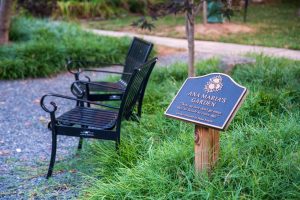 Longtime neighbor Marcia Ribeiro organized the creation of Ana’s Garden at the end of Mosher Street as a memorial for her mother, Ana Maria Couto, and a tribute to her love for Bolton Hill. Ana died November 8, 2016 after spending her retirement in Bolton Hill with Marcia and her husband, Paul Silvertri. Many neighbors knew Ana from her walks in the area of the neighborhood that became Ana’s Garden. Ana’s Garden is a quiet, reflective space that brings people together as a community. Designed Dejan Ernestl, the garden has seven trees and nine boulders representing tombstones. Ana’s Garden is actively fundraising; to give, go here to support Ana’s Garden.
Longtime neighbor Marcia Ribeiro organized the creation of Ana’s Garden at the end of Mosher Street as a memorial for her mother, Ana Maria Couto, and a tribute to her love for Bolton Hill. Ana died November 8, 2016 after spending her retirement in Bolton Hill with Marcia and her husband, Paul Silvertri. Many neighbors knew Ana from her walks in the area of the neighborhood that became Ana’s Garden. Ana’s Garden is a quiet, reflective space that brings people together as a community. Designed Dejan Ernestl, the garden has seven trees and nine boulders representing tombstones. Ana’s Garden is actively fundraising; to give, go here to support Ana’s Garden.
Corpus Christi Rectory Garden and Grounds
Originally Corpus Christi Church was named Jenkins Memorial in honor of benefactors Thomas and Luisa Jenkins. It was the first church in the  United States to be named Corpus Christi and the first church in Baltimore to be built entirely of granite. The Gothic architecture contains some of the finest Florentine mosaics in the world. In 1891 the church was consecrated; the rectory was built in 1894. The church was placed on the National Register of Historic Places in 1978.
United States to be named Corpus Christi and the first church in Baltimore to be built entirely of granite. The Gothic architecture contains some of the finest Florentine mosaics in the world. In 1891 the church was consecrated; the rectory was built in 1894. The church was placed on the National Register of Historic Places in 1978.
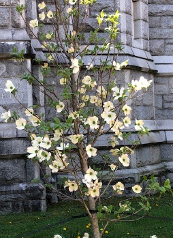
During the 1980s Lake Roland Garden Club was responsible for the design and plantings of dogwood trees and boxwoods at the front and parking lot side of the church. Thirty years later, the front boxwoods were removed because of disease, and a native Appalachian dogwood replaced a dying dogwood. A rebirth of the rectory gardens began in the fall of 2014. A parish volunteer effort blossomed. Shrubs, bulbs, native plants, and a tree came from the gardens of community members, donations, and grants.
Mount Royal School Pollinator Garden
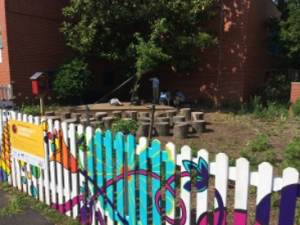 The Mount Royal School Pollinator Garden was created out of a desire by parents, teachers and the principal, and community members to transform a vacant site next to the school occupied by two commercial-scale dumpsters. That desire led to pro bono professional design help from a landscape architect, student collaboration with a MICA ceramics professor on designing and kiln-firing c
The Mount Royal School Pollinator Garden was created out of a desire by parents, teachers and the principal, and community members to transform a vacant site next to the school occupied by two commercial-scale dumpsters. That desire led to pro bono professional design help from a landscape architect, student collaboration with a MICA ceramics professor on designing and kiln-firing c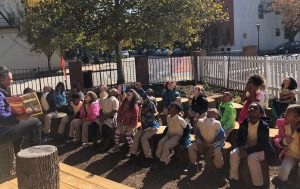 eramic stepping stones for the garden, and a special relationship with Ladew Topiary Gardens in Monkton, MD to have Ladew staff provide garden design, in-classroom instruction, and second and third grade visits to Ladew. Grant funding from the Chesapeake Bay Trust, the Bolton Hill Garden Club, and other sources made the project possible, with volunteers completing construction of the garden in 2018.
eramic stepping stones for the garden, and a special relationship with Ladew Topiary Gardens in Monkton, MD to have Ladew staff provide garden design, in-classroom instruction, and second and third grade visits to Ladew. Grant funding from the Chesapeake Bay Trust, the Bolton Hill Garden Club, and other sources made the project possible, with volunteers completing construction of the garden in 2018.
The design and plant selection for the garden is as a pollinator micro-habitat for STEM study by the students as an outdoor classroom.
Sally’s Garden
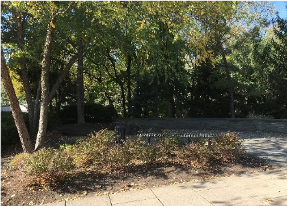 Sally’s Garden is a shady pocket park located on the 1200 block of Mt. Royal Avenue. The unmaintained property for the park was purchased from the city of Baltimore by MICA in 2000. Landscaped and dedicated the same year in memory of MICA alum Doris Reif’s daughter, Sally, the park is maintained by MICA for the benefit of the entire community. The landscape planning was by Higgins-Lazarus Design. Austrian pines, blue spruce, white spruce and river birches provide visual and sound screening from adjacent Howard Street down the hill. A stone wall, bench, and meditation stones provide a quiet spot for reflection or conversation.
Sally’s Garden is a shady pocket park located on the 1200 block of Mt. Royal Avenue. The unmaintained property for the park was purchased from the city of Baltimore by MICA in 2000. Landscaped and dedicated the same year in memory of MICA alum Doris Reif’s daughter, Sally, the park is maintained by MICA for the benefit of the entire community. The landscape planning was by Higgins-Lazarus Design. Austrian pines, blue spruce, white spruce and river birches provide visual and sound screening from adjacent Howard Street down the hill. A stone wall, bench, and meditation stones provide a quiet spot for reflection or conversation.
Zippy’s Garden

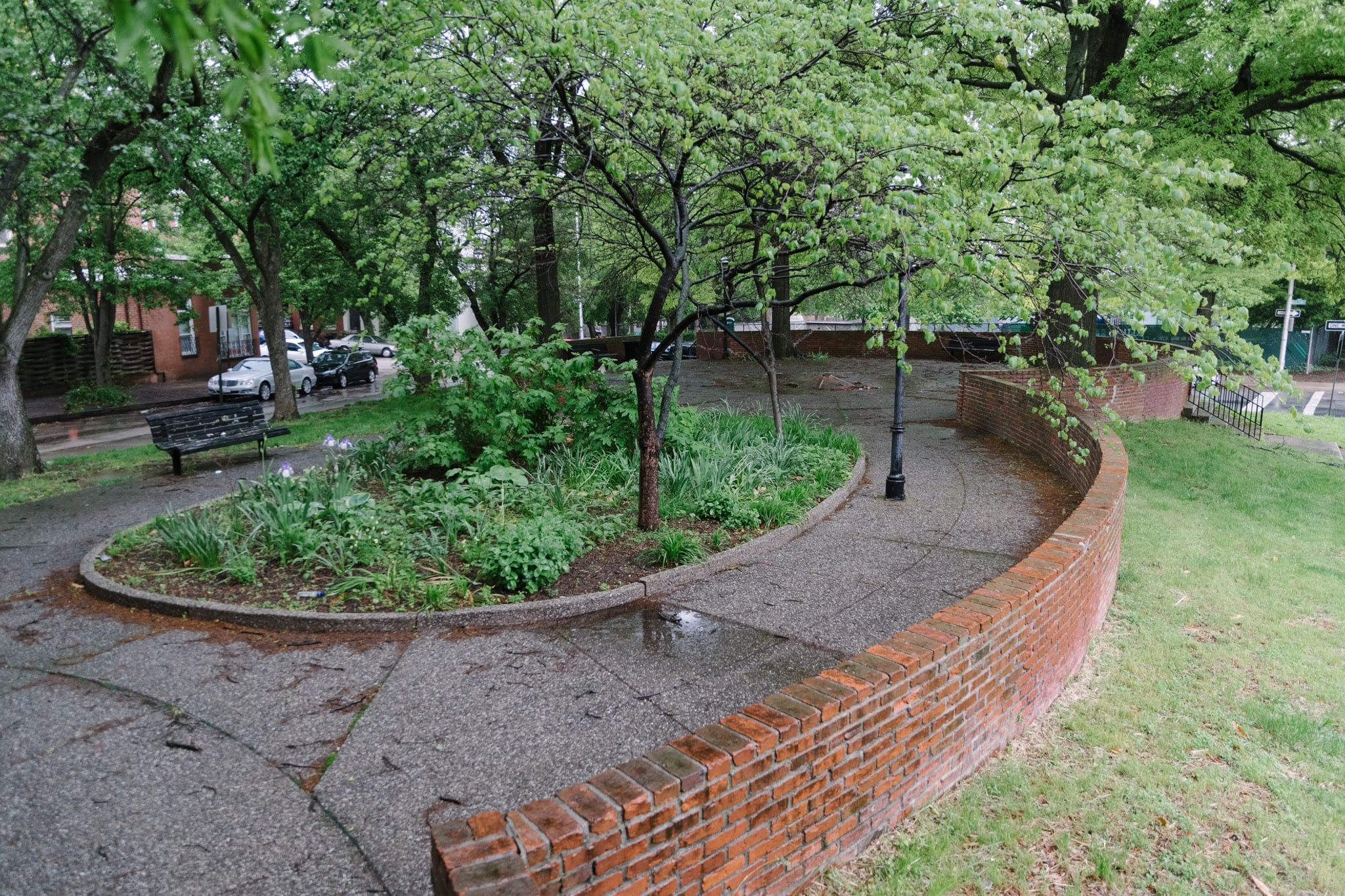
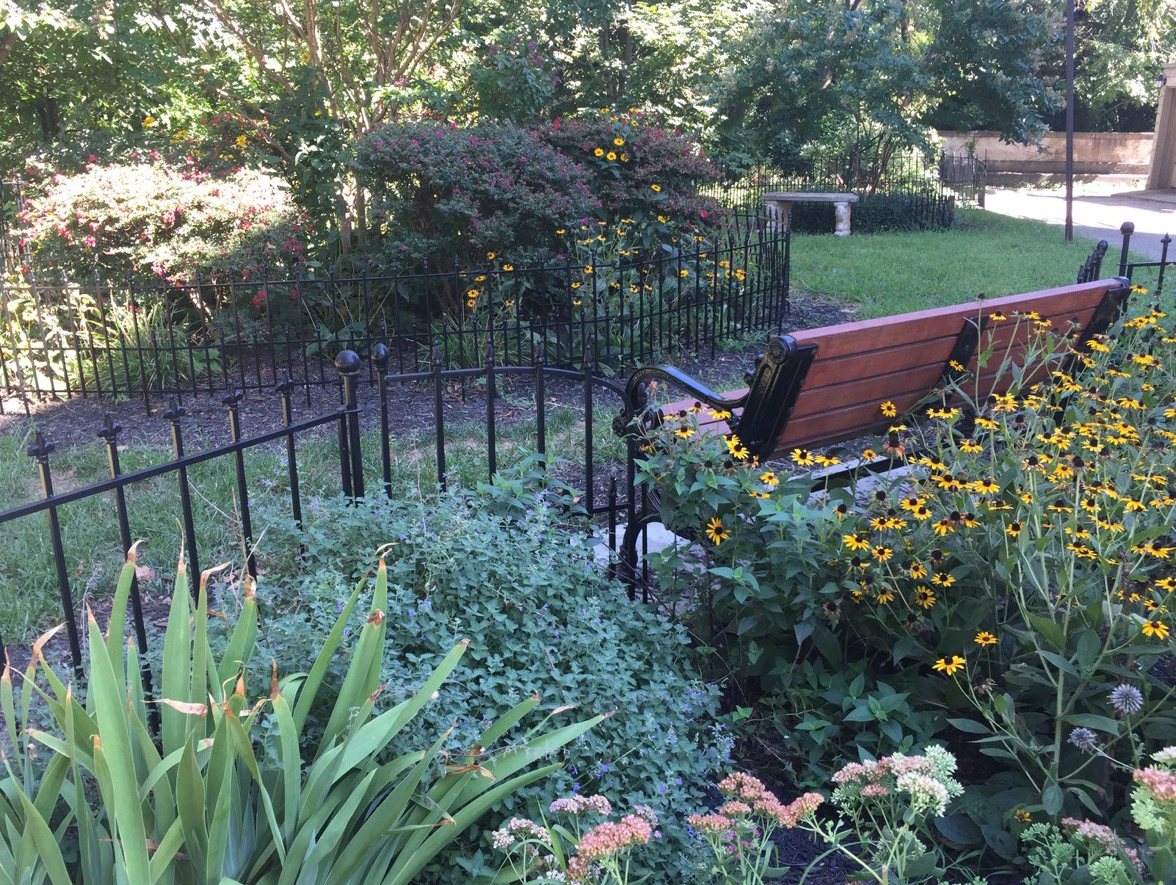

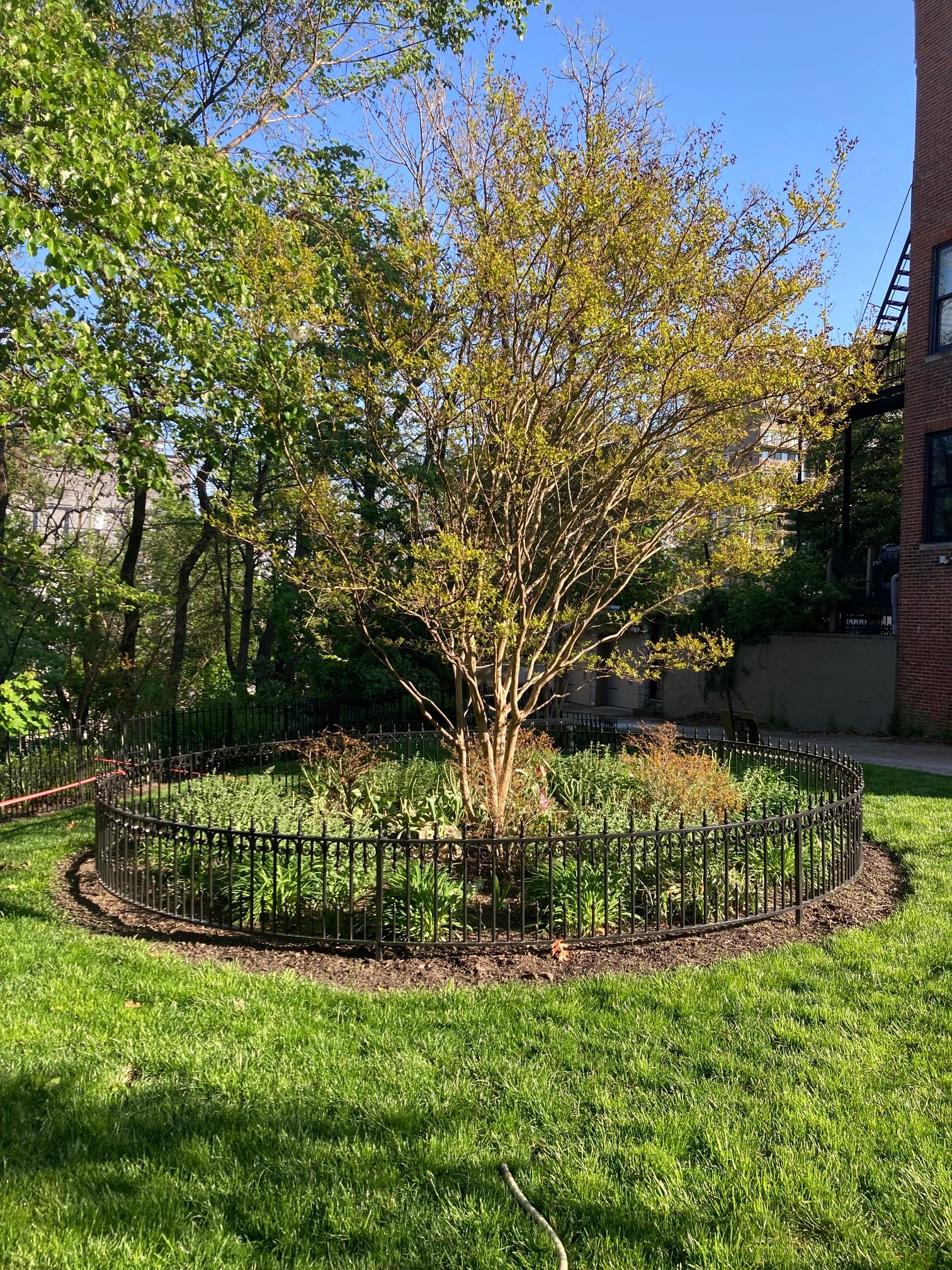
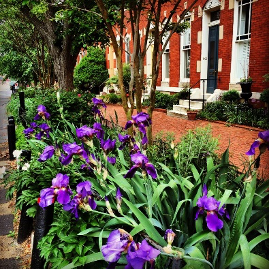
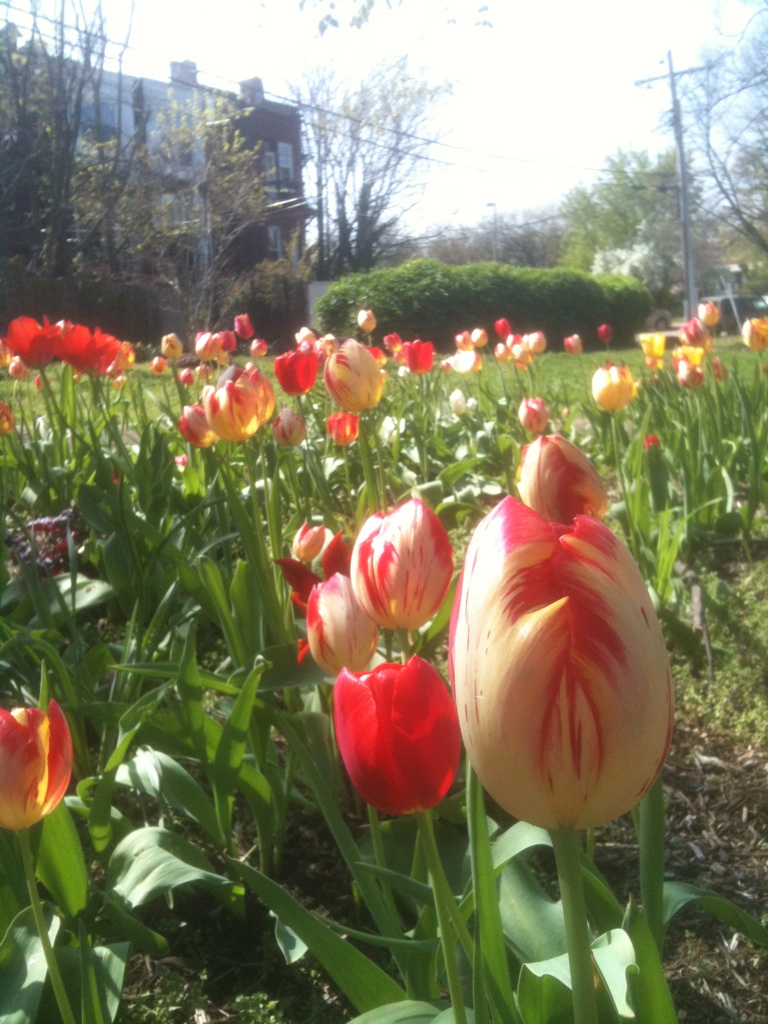


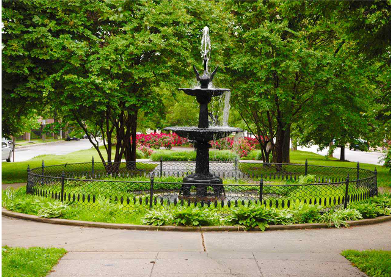

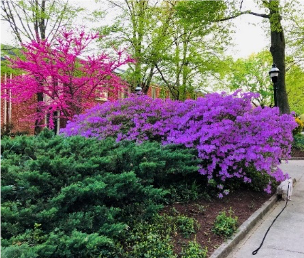
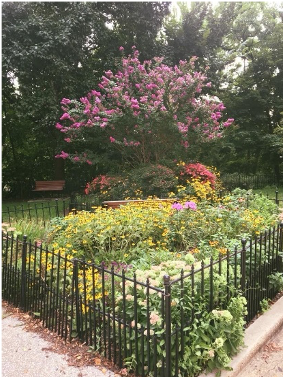
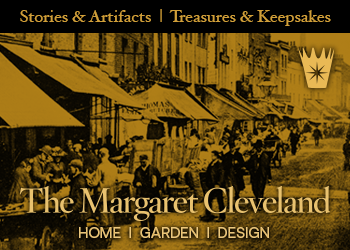

.png)

.png)


